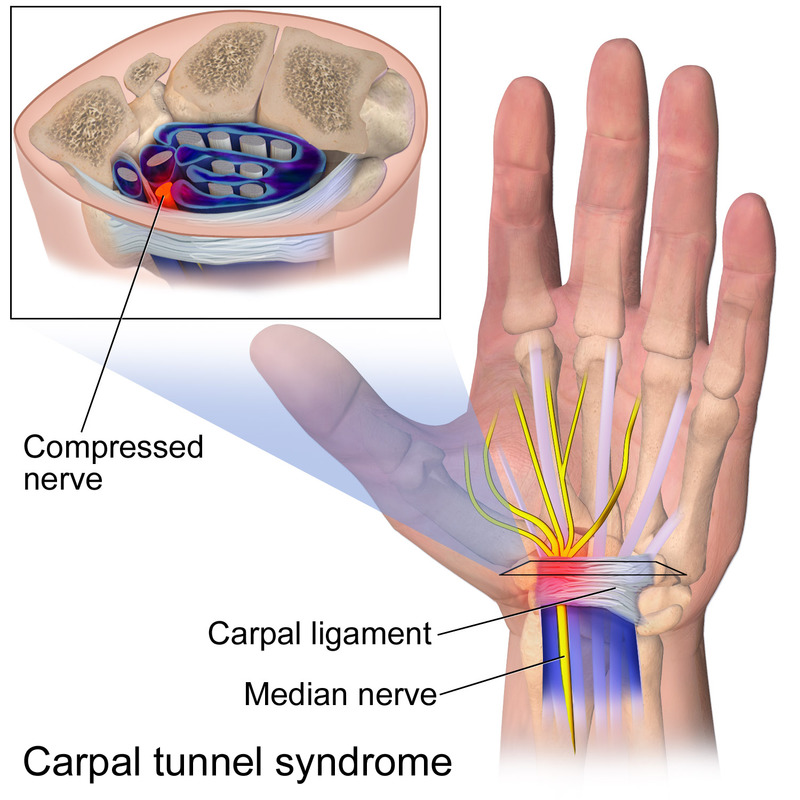Carpal Tunnel Syndrome and the Median Nerve
There are two rows of carpal bones in the wrist that form the carpal tunnel.
Carpal tunnel syndrome gets its name because the median nerve passes through the tunnel on its way to innervating the hand.
The median nerve is responsible for the pain of carpal tunnel syndrome.
But the wrist, where you likely feel the pain, isn’t always the culprit.
There are two main nerves that service the arm— the median and the ulnar.
Both flow out from the neck and make their way down through the upper extremity.
Diagnosing carpal tunnel isn’t all that difficult.
The ulnar nerve handles the outside of the hand while the median nerve takes care of the inside.
When people report pain in the thumb and index fingers you can bet it is the median and not the ulnar nerve that is compromised.
Carpal tunnel syndrome is a classic repetitive stress injury.
It usually happens from doing certain actions, very often at work, over sometimes extremely long periods of time.
Carpal tunnel syndrome is often sourced and treated at the wrist. But the issue is more often with the alignment of the head, neck, and shoulders.
Nerves come through the neck to travel down to the wrist and hand.
One of these nerves is the median nerve that passes through the armpit on its way to the carpal tunnel and the hand.
The median nerve also passes underneath the collar bone.
A misaligned collar bone, often due to tight muscles and poor posture can interrupt the flow of the nerve to the hand.
Postural alignment determines the space that your nerves have to flow out of the spine. And the room that they have to move will determine how effectively they can energize the body.
So while the pain from carpal tunnel syndrome is in your wrist, the source of the problem isn’t always where you feel the pain.
Image: Blausen.com staff (2014). “Medical gallery of Blausen Medical 2014”. WikiJournal of Medicine 1 (2). DOI:10.15347/wjm/2014.010. ISSN 2002-4436.

